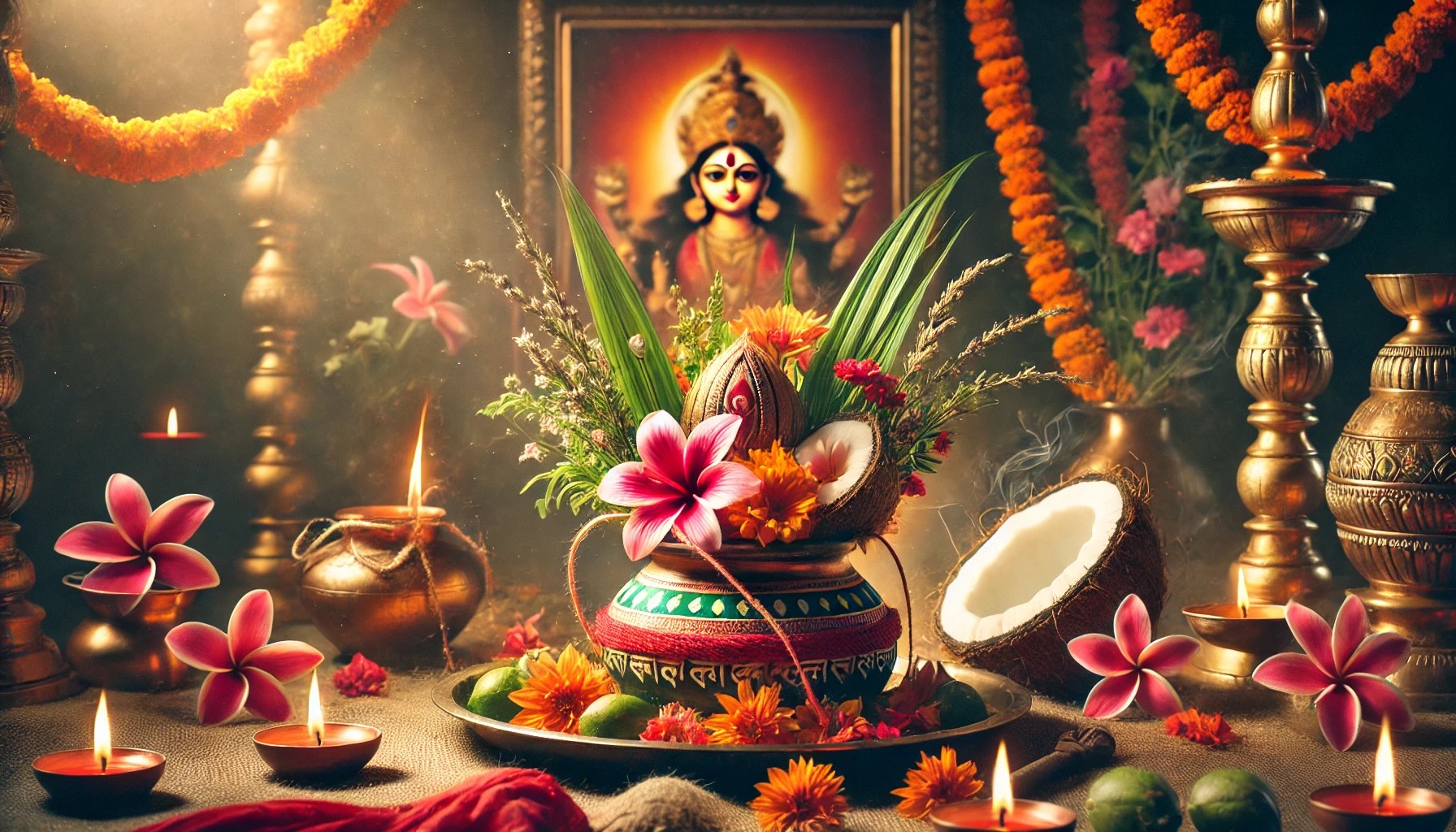Dashain Begins: The Epic Battle of Goddess and Demon That Shaped Creation's Future!

Ghatasthapana: Historical Significance and the Beginning of Navaratri
In Nepali culture, Ghatasthapana holds immense religious significance, marking the first day of Navaratri. This day is regarded as the beginning of the auspicious festival of Vijayadashami, a time dedicated to the worship of Goddess Durga. Ghatasthapana symbolizes the invocation of the divine power of Durga, shedding light on the religious and cultural importance of Navaratri as a whole.
Historical Background of Ghatasthapana
The origins of Ghatasthapana are rooted in ancient scriptures and Hindu religious texts. According to Hindu mythology, Goddess Durga engaged in a fierce battle with the demon Mahishasura for nine days. On the tenth day, she finally vanquished him, restoring peace to the universe. This historical and religious event is commemorated symbolically through the celebration of Ghatasthapana and Navaratri. On the day of Ghatasthapana, devotees establish a sacred vessel or "Kalash," which serves as the focal point for worship over the nine days of Navaratri.
The primary ritual of Ghatasthapana involves the installation of the Kalash. This sacred pot is filled with water and surrounded by sapta dhanya, or seven types of grains, symbolizing prosperity and fertility. The Kalash is believed to be a representation of Goddess Durga's divine power and presence. Devotees place great importance on this day, believing that it brings peace, prosperity, and positive energy into their homes. By invoking the goddess, devotees engage in nine days of continuous worship, fostering inner strength, courage, and devotion.
Cultural and Social Significance of Navaratri
Navaratri is not only a religious festival but also a cultural and social event. Throughout the period from Ghatasthapana to Dashain, various forms of the goddess are worshipped, promoting self-purification and devotion. During Navaratri, people participate in various rituals, including hawan (sacred fire rituals), bhajans (devotional songs), and kirtans (prayer recitations). These practices invoke a sense of purity and devotion among devotees and serve as a means of connecting with the divine.
This festival also strengthens the ties between individuals and their cultural heritage, encouraging people to embrace their traditions. Ghatasthapana marks the beginning of this journey, linking us to our roots and reinforcing the cultural values that have been passed down through generations.
Rituals and Facts Associated with Ghatasthapana and Navaratri
The rituals observed during Ghatasthapana and Navaratri highlight both religious and cultural identity. The installation of the Kalash and the planting of sapta dhanya symbolize the power of the goddess. From the first day of Ghatasthapana, devotees immerse themselves in daily worship, deepening their connection to their religious traditions. Worshipping Goddess Durga during this time is believed to enhance one's inner strength, courage, and patience.
The Kalash is seen as a symbol of purity, prosperity, and positive energy. Fasting during Navaratri is believed to promote health, spiritual growth, and a positive outlook on life. Navaratri encourages self-reflection, fostering a sense of duty and purpose.
The Importance of Dashain and Navaratri
The celebration of Dashain begins with Ghatasthapana. This festival reminds us of our cultural and religious roots, symbolizing the victory of good over evil. During Dashain, families plant Jamara, which is worshipped for nine days and offered as blessings by elders to younger family members on the tenth day, symbolizing love and protection. This practice brings us closer to nature, as Jamara signifies a deep connection between humans and the environment.
This year’s Dashain is particularly special, as many families were unable to celebrate with the same enthusiasm last year due to the restrictions of the COVID-19 pandemic. However, this year, the festival is more relaxed, allowing people to celebrate with renewed joy and spirit. By planting Jamara, we invoke the goddess’s blessings for peace, prosperity, and happiness.
On this auspicious occasion of Ghatasthapana, may Navaratri bring blessings, joy, and prosperity to your life. May the Kalash of Ghatasthapana bring positive energy, and may Goddess Durga’s grace protect and empower everyone. Happy Navaratri and Dashain to all!




![From Kathmandu to the World: How Excel Students Are Winning Big [Admission Open]](https://nepalaaja.com/img/70194/medium/excel-college-info-eng-nep-2342.jpg)
